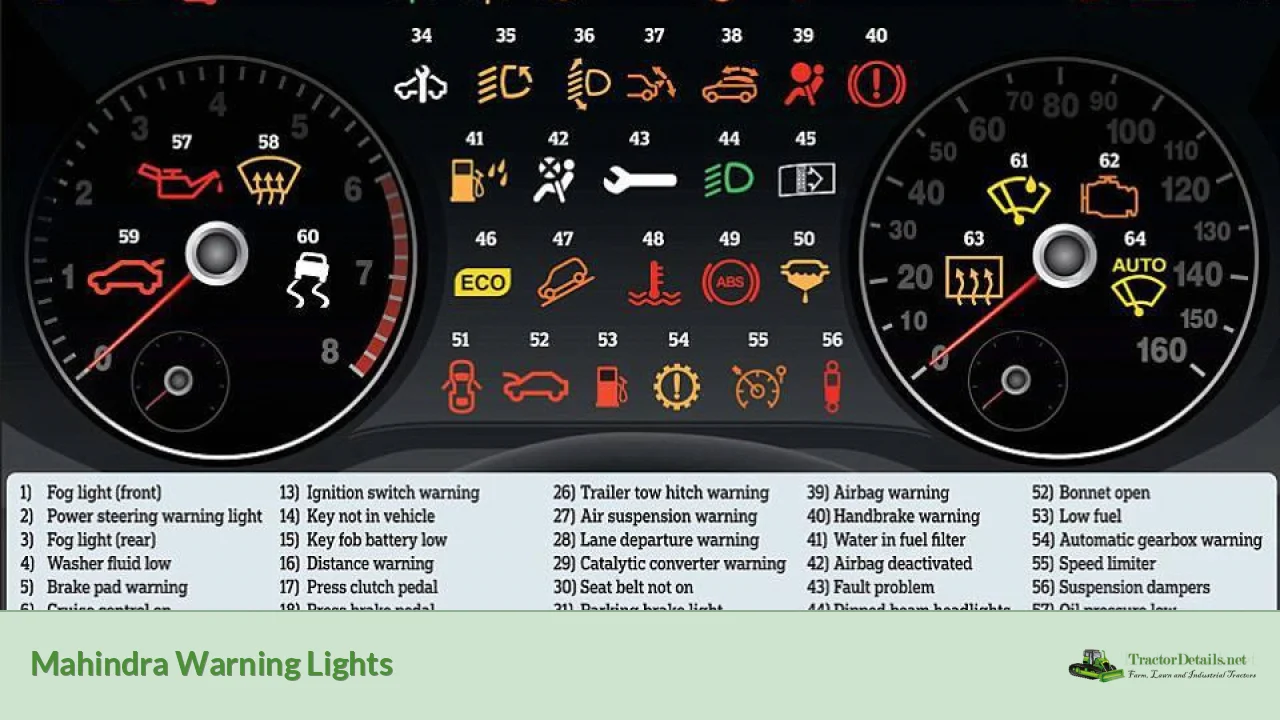Mahindra vehicles are renowned for their reliability and performance, but warning lights can still crop up from time to time. In this comprehensive guide, we'll explore the different Mahindra warning lights, what they mean, and how to diagnose and troubleshoot any issues they may be signaling. From common causes to expert tips, this guide is your go-to resource for diagnosing and resolving Mahindra warning lights.
Troubleshooting Mahindra Warning Lights: Causes, Solutions, and Expert Tips
Regardless of how reliable and well-built a Mahindra vehicle may be, warning lights can still appear from time-to-time. Understanding what the warning lights mean, their potential causes, and how to troubleshoot them is essential for keeping your Mahindra car or SUV running smoothly. In this comprehensive guide, we'll explore the different Mahindra warning lights, their potential causes, and how to diagnose and troubleshoot any issues they may be signaling. We'll also provide expert tips to help you keep your Mahindra running in peak condition.
| Warning Light | Cause | Solution |
|---|---|---|
| Check Engine Light | Loose gas cap, faulty oxygen sensor, spark plug misfire | Tighten gas cap, replace oxygen sensor, replace spark plug |
| Oil Pressure Light | Low oil levels, faulty oil pressure sensor, faulty oil pump | Change oil, replace oil pressure sensor, replace oil pump |
| Battery Warning Light | Loose battery cable, faulty alternator, dead battery | Tighten battery cable, replace alternator, replace battery |
BRAKE
When the brake warning light illuminates on your Mahindra dashboard, it means that the vehicle's brake system is malfunctioning. This can be caused by a low brake fluid level, a worn brake pad, faulty electrical wiring, or a faulty brake system component. To troubleshoot this issue, start by checking the brake fluid level and inspecting the brake pads. If the pads are worn, they should be replaced. Additionally, inspect the electrical wiring for any loose connections or corrosion. If the wiring appears to be in good condition, have a certified technician inspect the brake system components for any possible faults.
CHECK ENGINE
The check engine light indicates that the vehicle's engine control system has detected a fault. This could be caused by a variety of issues, including an engine misfire, a faulty oxygen sensor, or a faulty catalytic converter. To troubleshoot this issue, start by checking the engine oil and air filter. Additionally, inspect the oxygen sensor and the catalytic converter for any signs of wear or damage. If any of these components appear to be faulty, they should be replaced. If the engine oil and filter are in good condition, have a certified technician inspect the engine control system for any possible faults.
TEMPERATURE
When the temperature warning light illuminates on your Mahindra dashboard, it means that the vehicle's engine is running too hot. This can be caused by a malfunctioning cooling system, an engine oil leak, or an underinflated tire. To diagnose and troubleshoot this issue, start by checking the engine oil level and inspecting the coolant level. Additionally, inspect the tires for any signs of wear or damage. If any of these components appear to be faulty, they should be replaced as soon as possible. If the engine oil and coolant levels are in good condition, have a certified technician inspect the cooling system for any possible faults. The Mahindra warning lights are a clear indicator of a potential issue with your vehicle, and should be addressed as soon as possible to ensure your vehicle is running safely and optimally.
Key Takeaways for Troubleshooting Mahindra Warning Lights
- Check the engine oil level and air filter
- Inspect the brake pads, coolant level, and tires
- Replace any faulty components (oxygen sensor, catalytic converter, etc.)
- Have a certified technician inspect the engine control system and cooling system
- Address any warning lights immediately to ensure your vehicle is running safely and optimally
Conclusion: Taking Care of Your Vehicle with Mahindra Warning Lights
When the warning lights on your Mahindra dashboard illuminate, it's important to take the necessary steps to troubleshoot and address the issue. From checking the engine oil level and air filter to inspecting the brake pads, coolant level, and tires, there are a variety of steps you can take to diagnose and troubleshoot the issue. Additionally, it is important to replace any faulty components, such as the oxygen sensor or catalytic converter, and to have a certified technician inspect the engine control system and cooling system. Taking care of these warning lights is essential to ensure your vehicle is running safely and optimally.
https://www.youtube.com/watch?v=nkVY1YsJ2jAu0026pp=ygUYTWFoaW5kcmEgV2FybmluZyBMaWdodHNf
